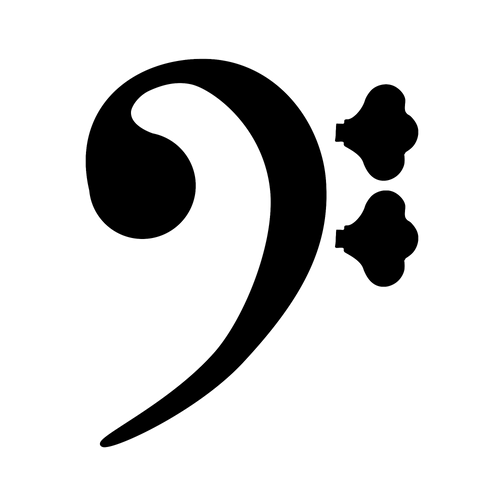Ever wonder why some bows feel perfect in your hands while others feel clunky? The answer lies in one simple measurement. The balance point.
Most double bass players overlook this crucial detail. They focus on wood type, hair quality, or weight. But the balance point of a bow? That's where the magic happens.
What is the balance point?
Think of it like a seesaw. The balance point is where your bow would perfectly balance if you placed it on your finger. Too far toward the tip, and your bow feels heavy and sluggish. Too close to the frog, and you lose control.
The sweet spot for most double bass bows sits around 8 to 8.75 inches from the frog for French bows, according to professional luthiers and bow experts. Research from TalkBass forums, where experienced luthiers share their expertise, indicates that French bows generally target a balance point of 8 inches. This creates the perfect partnership between your hand and the bow.
What Good Balance Does for You
Your bow is more than just a tool. It's more of a musical paintbrush, and understanding the mechanics of drawing a full, resonant sound out of the bass is a dark magic in many ways.
A well-balanced bow does three things:
- It reduces fatigue. When the weight distribution feels natural, your arm doesn't fight against the bow. You play longer without strain.
- It improves control. The right balance point lets you execute smooth bow changes. Your down bows flow into up bows effortlessly.
- It enhances sound quality. A balanced bow helps you maintain consistent contact with the string. No more scratchy notes or uneven tone.
The Science Behind the Feel
The balance point affects how the bow responds to your movements. When balanced correctly, the bow becomes an extension of your arm. The weight feels distributed evenly across your entire bow stroke.
We want our bow to feel like a natural extension of our arm, and the balance point is what makes this possible.
Think about holding a hammer. If all the weight sits in the head, your wrist works overtime. But when the weight is distributed properly, the tool feels light and responsive. Same principle applies to your bow.
How to Test Your Bow's Balance?
Place your bow horizontally on your index finger. Start near the frog and slide your finger toward the tip until the bow balances perfectly. Measure the distance from the frog to this balance point.
A pro bow maker, Ken Altman explains the proper measurement technique: "Adjust the frog to the forward-most position so that it touches or is at least close to the thumb leather. Screw in the button until it just touches the end of the stick. Then balance the bow on your finger or a pencil, note where that point is, and measure from there to the end of the stick where it touches the button."
Don't just rely on numbers, though. How does the bow feel in your hand? Does it want to dive toward the string or float away from it? Trust your instincts along with the measurements.
What Affects the Balance Point of a Bow?
Several factors influence where your bow balances:
- The frog adds significant weight at the bottom. Heavier frogs push the balance point closer to your hand.
- Wood density matters too. Denser wood near the tip shifts the balance forward. Lighter wood keeps it back.
- The metal winding affects balance as well. More winding adds weight near the frog.
- Even the hair impacts balance slightly. Thicker hair bundles add tiny amounts of weight at the tip.
When The Balance Point Goes Wrong
Poor balance creates problems fast. Too tip-heavy, and your bow fights you on every stroke. You'll develop tension in your shoulder and forearm.
Too frog-heavy and you lose finesse. Delicate passages become impossible. Your bow wants to bounce off the string instead of staying connected.
Wrong balance also causes inconsistent sound. Some notes ring beautifully, while others sound choked or scratchy.
The Professional Standard
Bass bows generally have a balance point a bit closer to the frog. According to Kent Altman, "The closer the balance point is to the tip, the heavier the bow will feel. Conversely, the closer the balance point is to the frog, the lighter the bow will feel."
But remember, these are starting points. The best balance point is the one that feels right for your specific needs.
Upgrading Your Sound
When you find a bow with the right balance point, everything else clicks into place. Your bow hold feels more natural. String changes flow smoothly. Your sound becomes more consistent across all dynamics.
Xavier Foley partnered with Florida Violins to design the iStrad French bow with its precise 8.75-inch balance point. After years of performing everything from delicate solos to chamber pieces, Xavier knew exactly what balance point delivers that professional feel.
Florida Violins crafted the iStrad with a carbon fiber core wrapped in aged Pernambuco wood. This unique construction creates perfect weight distribution while keeping all the warmth and response you want from traditional materials.
Xavier didn't just pick that balance point randomly either. He needed a bow that could handle whatever music threw at him. Xavier collaborated with the one of finest double bass bow makers in the US to achieve this precise balance point. The result is a bow that feels effortless in your hands while letting you express exactly what you're hearing in your head.
The balance point isn't just a number on a spec sheet. It's the foundation of great bow construction. When you find the right balance, your playing transforms. Notes flow more freely. Music feels more natural. Your bass finally sounds the way you always imagined it could.
Have questions about the balance point of a bow or want to discuss your specific needs? Xavier and his team help musicians worldwide find their perfect setup. Get in touch today for all business inquiries and concert requests.

